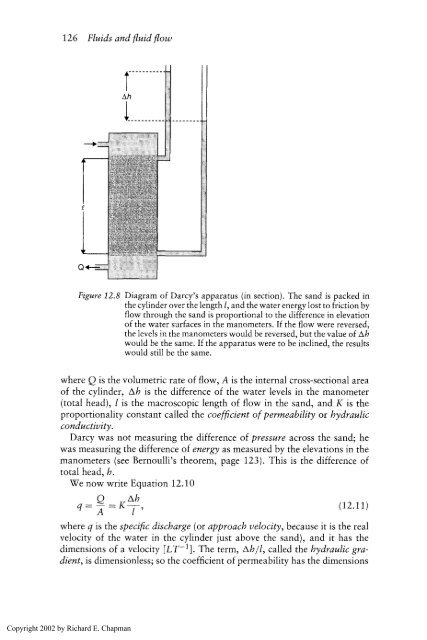Physics for Geologists, Second edition
Physics for Geologists, Second edition
Physics for Geologists, Second edition
Create successful ePaper yourself
Turn your PDF publications into a flip-book with our unique Google optimized e-Paper software.
126 Fluids and fluid flow<br />
Figure 12.8 Diagram of Darcy's apparatus (in section). The sand is packed in<br />
the cylinder over the length I, and the water energy lost to friction by<br />
flow through the sand is proportional to the difference in elevation<br />
of the water surfaces in the manometers. If the flow were reversed,<br />
the levels in the manometers would be reversed, but the value of Ah<br />
would be the same. If the apparatus were to be inclined, the results<br />
would still be the same.<br />
where Q is the volumetric rate of flow, A is the internal cross-sectional area<br />
of the cylinder, Ah is the difference of the water levels in the manometer<br />
(total head), 1 is the macroscopic length of flow in the sand, and K is the<br />
proportionality constant called the coefficient of permeability or hydraulic<br />
conductivity.<br />
Darcy was not measuring the difference of pressure across the sand; he<br />
was measuring the difference of energy as measured by the elevations in the<br />
manometers (see Bernoulli's theorem, page 123). This is the difference of<br />
total head, h.<br />
We now write Equation 12.10<br />
where q is the specific discharge (or approach velocity, because it is the real<br />
velocity of the water in the cylinder just above the sand), and it has the<br />
dimensions of a velocity [LT-'1. The term, Ahll, called the hydraulic gra-<br />
dient, is dimensionless; so the coefficient of permeability has the dimensions<br />
Copyright 2002 by Richard E. Chapman






